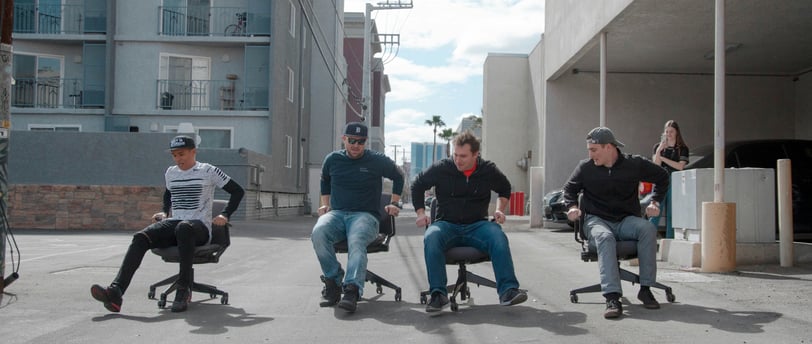Introduction to A Better Way to Sit
Proper chair adjustments—height, seat depth, and foot positioning—are crucial for preventing back and hip pain. Small changes can significantly improve comfort and posture, leading to reduced discomfort during long desk hours.
SELFAWARENESS
7/28/20243 min read


Introduction to A Better Way to Sit
If you spend long hours at your desk, you probably know the feeling of back and hip pain all too well. Many of us think choosing an ergonomic chair will solve these problems, but the truth is, proper posture and chair adjustments are key to reducing discomfort. Let’s dive into some simple tips to help you avoid common posture pitfalls and stay comfortable throughout your workday.
1. Adjust Your Chair Height
You might not be thrilled about fiddling with the levers and knobs under your chair, but taking a moment to adjust the height can make a big difference. The right height helps position your hips and pelvis correctly, which in turn supports the natural curve of your lower back. This adjustment can help prevent pain and stiffness that often come from prolonged sitting.
A well-adjusted chair will keep your knees at a level or slightly below your hips, which helps maintain a neutral spine position. If your chair is too high, you might find yourself scooting forward, which can strain your back and reduce support. Conversely, if it’s too low, you could experience excessive hip flexion, which can lead to discomfort and pain over time.
2. Pay Attention to Seat Depth
The depth of your chair seat is crucial for your posture. Ideally, when sitting all the way back in your chair, you should have your back fully supported. A seat that’s too deep or too shallow can throw off your posture and lead to discomfort.
I had a similar issue with seat depth myself. My chair was not properly adjusted, and I found that it led to significant back pain. Once I made adjustments to the seat depth and ensured it provided adequate support, my discomfort was greatly reduced. A chair with a good depth adjustment feature or even a supportive pillow can help. The goal is to ensure your back is fully supported while keeping your knees at a comfortable angle. Too much curve in the seat surface can cause your back to round, leading to poor posture and pain.
3. Find the Right Height for Your Feet
A common issue is not having your feet flat on the floor, which usually indicates that your chair height isn’t set correctly. Your feet should rest comfortably on the floor, and your thighs should be parallel to the ground. If your feet dangle, consider using a footrest or a sturdy book to bring your feet to a comfortable position.
Your knees should be level with or slightly lower than your hips. This position helps to maintain a stress-free posture, reducing the risk of back and hip pain.
I also had trouble with getting my feet to rest comfortably on the floor. Once I adjusted my chair height and made sure my feet were well-positioned, my back pain significantly improved. Small changes in your chair height can make a big difference in your overall comfort.
4. Risks of Incorrect Chair Height
If your chair is too high, you might end up scooting forward to get closer to your desk, which can force you to adopt an awkward posture. This can lead to muscle fatigue, pain, and even long-term musculoskeletal issues.
On the other hand, if your chair is too low, your knees will be higher than your hips, causing excessive hip flexion. This can strain your back and lead to discomfort, especially if your hip muscles aren’t very flexible.
Summary:
Adjusting your chair to fit your body correctly might seem like a small detail, but it’s a crucial step in maintaining good posture and preventing back and hip pain. By setting your chair height properly, paying attention to seat depth, and ensuring your feet are well-positioned, you can create a more comfortable and supportive workspace.
Take a few minutes to fine-tune your chair adjustments and observe how these changes affect your comfort throughout the day. Small tweaks can lead to big improvements in how you feel during and after your work hours.
Empower
Transforming lives through personalized fitness and wellness solutions.
Connect
Shape Snack
contact@shapesnack.com
© 2024. All rights reserved.
